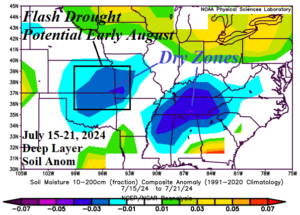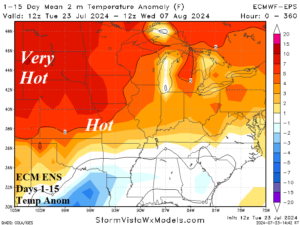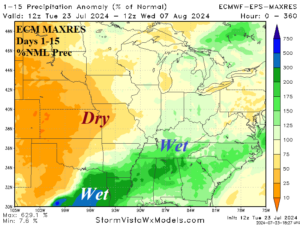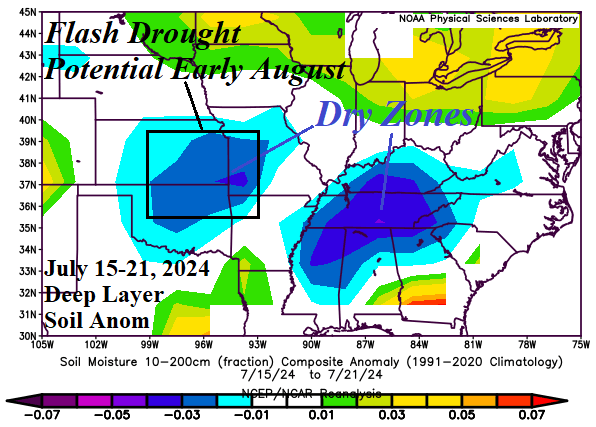
Extreme Heat ALERT for Late July Great Plains!
07/22/2024, 3:05 pm EDT
Dangerous U.S. Heatwave is Ahead!
07/24/2024, 6:10 am EDT
Fig. 1: Deep layer soil moisture deficits (blue) are located in the southeast Great Plains and Tennessee Valley (and vicinity).


Fig. 2-3: The 15-day temperature anomaly and percent of normal rainfall forecast utilizing ECM.
Discussion: Deep layer soil moisture deficits are generally the result of a long-term dry climate pattern (Fig. 1). When long duration (7-10 days) hot and dry weather moves across these regions, quick evolving (flash) drought can generate. These conditions are possible in the southeast Great Plains including Eastern Kansas to Central Oklahoma during late JUL/early AUG as an extreme heat and dry regime develops across and north of this zone (Fig. 2-3). A second and larger area of deep layer soil moisture deficit centered on the Tennessee Valley is likely to avoid rapidly developing drought due to the presence of persistent thundershower activity suppressing extreme heat risk.

